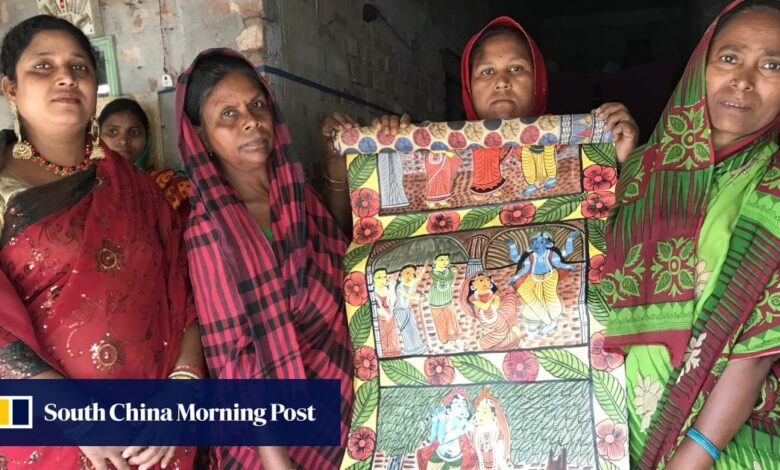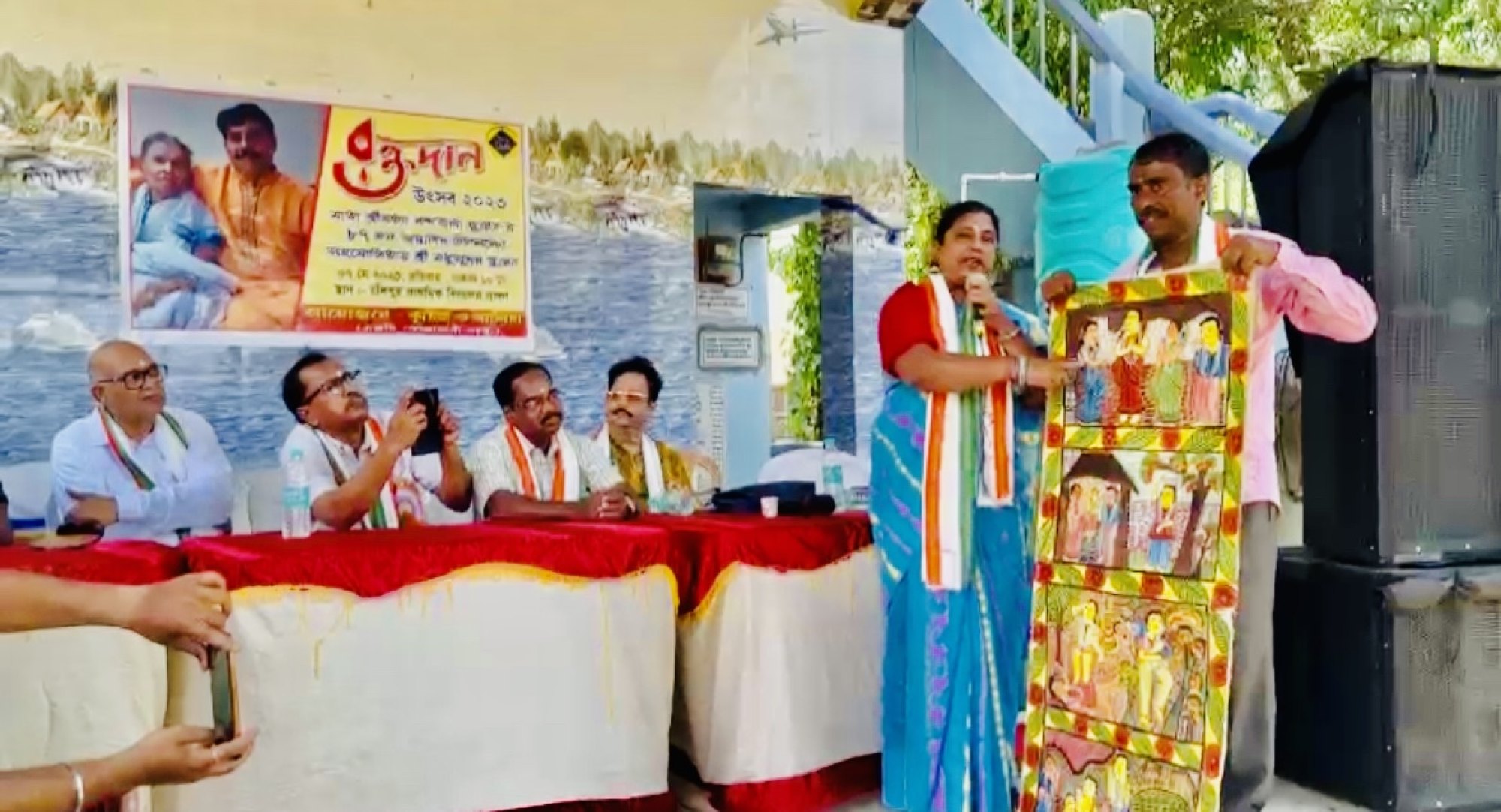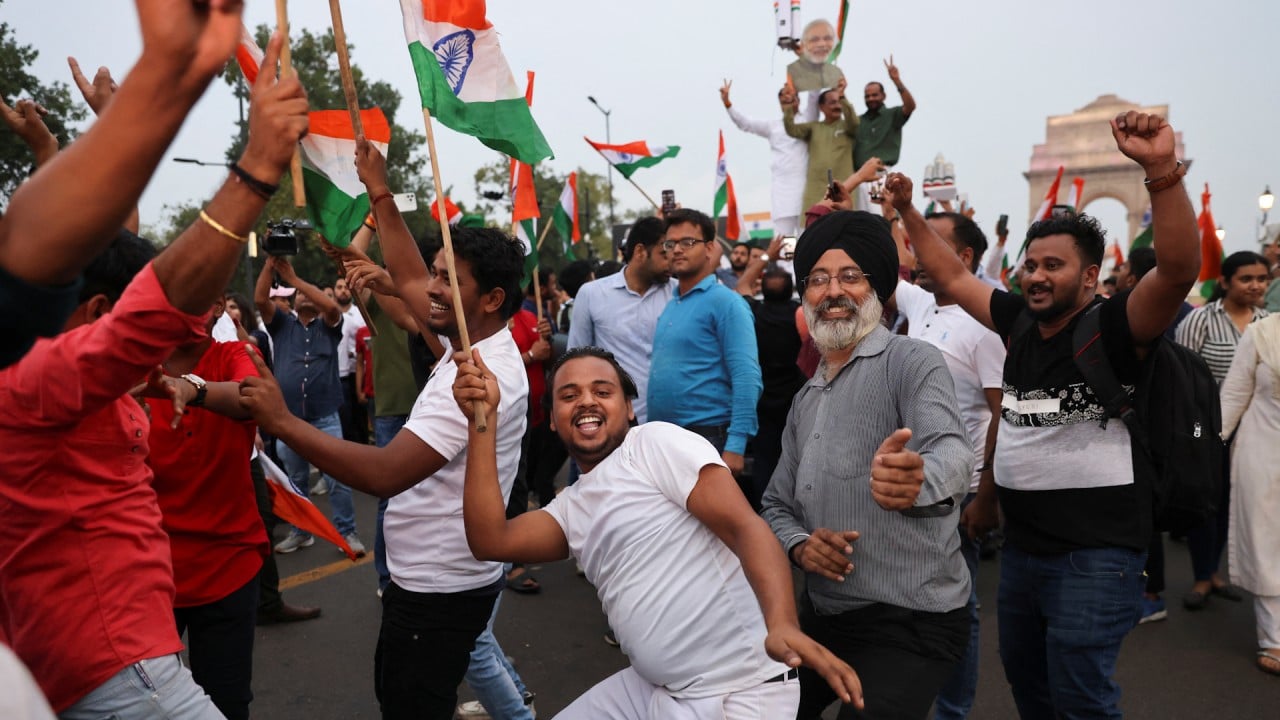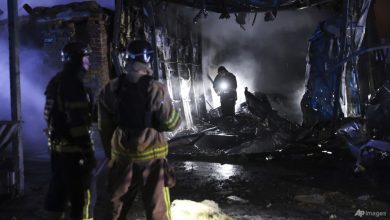Indian folk artists use centuries-old tradition to highlight modern issues, bring Muslims and Hindus together

[ad_1]
Traditionally, patuas, including Saira, have depicted scenes from Hindu epics and mythologies on cloth scrolls called patachitra, which range from around two to eight metres in length. While unrolling these scrolls, the artists sing self-composed songs that narrate the stories depicted in the paintings, resembling ballad-style performances.
In India, Hindu caretaker of a mosque says: ‘It’s one God for everyone’
In India, Hindu caretaker of a mosque says: ‘It’s one God for everyone’
The tangible evidence of this tradition in the form of scrolls only surfaced in the 18th century. They suggest that these Muslim artists were invited by Hindu landlords, administrative figures and police leaders in pre-colonial India to present musical renditions of Hindu deity stories, receiving compensation in cash, food or clothing in return.
In recent years, the focus of the folk painters, who are primarily from West Bengal’s East Midnapore and West Midnapore regions, has expanded to contemporary topics such as global warming, plastic pollution, floods and the Covid-19 pandemic.
“Our identity survives when the art survives. Only when we compose songs on contemporary issues, we would be able to keep this heritage art alive,” said the 50-year-old.
Khukurani Chitrakar, 35, who recently exhibited her work on road safety in Kyrgyzstan, said that since this form of folk art combines methods of oral and visual storytelling, its impact in conveying social messages is substantial.
For three decades, both governmental bodies and non-profit organisations have engaged the artists to promote various social-welfare initiatives – including on women’s literacy, sanitation, and HIV/Aids prevention – through their art and accompanying songs.
Ratnaboli Bose, founder of the Daricha Foundation, a platform that advocates for traditional folk and tribal arts, pointed out however that such projects can limit artistic freedom at times since the artists have to follow a script to meet the needs of the programme. Additionally, these paintings might not always resonate with art enthusiasts due to their specific messaging and audience.

Still, the patuas have ventured beyond mythological narratives to explore contemporary sociopolitical themes.
“A section of people, who hate Muslims on the basis of their religion, may change their perception about us when they watch us perform,” said Abed, who in 2012 painted a 158-metre-long Mahabharata – an ancient Hindu text – with seven other artists.
“Islam has never come in the way of our artistic compositions on Hindu mythologies. It clearly proves that we believe in communal harmony,” he said.
India’s hate crimes are being logged, by exiles Modi’s BJP want silenced
India’s hate crimes are being logged, by exiles Modi’s BJP want silenced
The art form has evolved over time. While artists initially painted on home-made raw-cotton cloth, rice starch and tamarind seeds, they now skilfully adhere paper or canvas to cloth, maintaining the tradition of using organically extracted colours from natural resources. Black hues stem from roasted rice grains, while red tones are the result of mixing betel leaves, lime, and catechu.
These colours, combined with wood-apple gum, are then applied to the paintings.
Patachitra paintings have garnered global recognition, some even being showcased by institutions like the Victoria and Albert Museum in London and the Indigo Art Museum in Philadelphia.
But some artists have transitioned to alternative livelihoods such as carpentry, tailoring or driving to chase better financial prospects, said Abed, who earns around 16,000 Indian rupees (US$194) per month.
The changing landscape has led some artists to focus on visual rather than performative art, omitting the musical component due to limited platforms for showcasing their singing abilities.
How Oscar-winning Naatu Naatu song and iconic hook step took the world by storm
How Oscar-winning Naatu Naatu song and iconic hook step took the world by storm
While some continue to make a living by performing at fairs and exhibitions, others have adapted the art to more accessible forms like painting mythological figures on garments, attracting younger consumers, as the demand for long scroll paintings dwindles.
Abed believes that reimagining the art form to ensure a consistent income is crucial to the goal of retaining artists who might otherwise leave for higher-paying occupations. The survival of the art, he said, hinges on the survival of its practitioners. “The art will survive only when the artist survives.”
Anwar Chitrakar, 47, an artist from West Midnapore’s Naya, creates small square paintings influenced by the vibrant colour and bold outlines of the Kalighat genre of painting. His artwork – which has been featured on the website of the Victoria and Albert Museum – delves into corruption, poverty, the plight of surrogate mothers and the hazards of reckless selfie-taking.
“I believe the art should have some imprint on day-to-day life so that people value it,” he said.
[ad_2]
Source link





